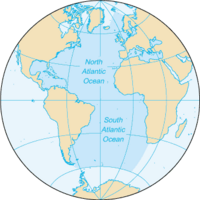
Photo from wikipedia
A new marine arthrotardigrade, Ligiarctus alatus sp. nov. found in sediments of the Brazilian continental shelf (100–150 m depth) in the Southwestern Atlantic Ocean, is described in this study. This… Click to show full abstract
A new marine arthrotardigrade, Ligiarctus alatus sp. nov. found in sediments of the Brazilian continental shelf (100–150 m depth) in the Southwestern Atlantic Ocean, is described in this study. This new species was recorded from sites located in the major oil extraction basins in Brazil (Campos and Potiguar basins). Within the subfamily Floractinae, the genus Ligiarctus characteristically presents primary clavae bent backwards, occupying the reduced lateral edges of the head. The new species is clearly distinguishable from L. eastwardi, the only known species of the genus, by the presence of internal distal notches on all claws, and six aliform cuticular expansions (frontal ala, two anterolateral alae, two posterolateral alae and caudal ala) with continuous digitiform procuticular supports (caesti). Ligiarctus eastwardi has only a caudal ala without caesti and internal notches are present on external claws only. The same pattern of cuticular expansions and caesti exhibited by the new species also occurs in the genus Florarctus, increasing the difficulty of defining the taxonomy of the subfamily Florarctinae, and forcing the emendment of the generic diagnosis of Ligiarctus.
Journal Title: Marine Biodiversity
Year Published: 2017
Link to full text (if available)
Share on Social Media: Sign Up to like & get
recommendations!